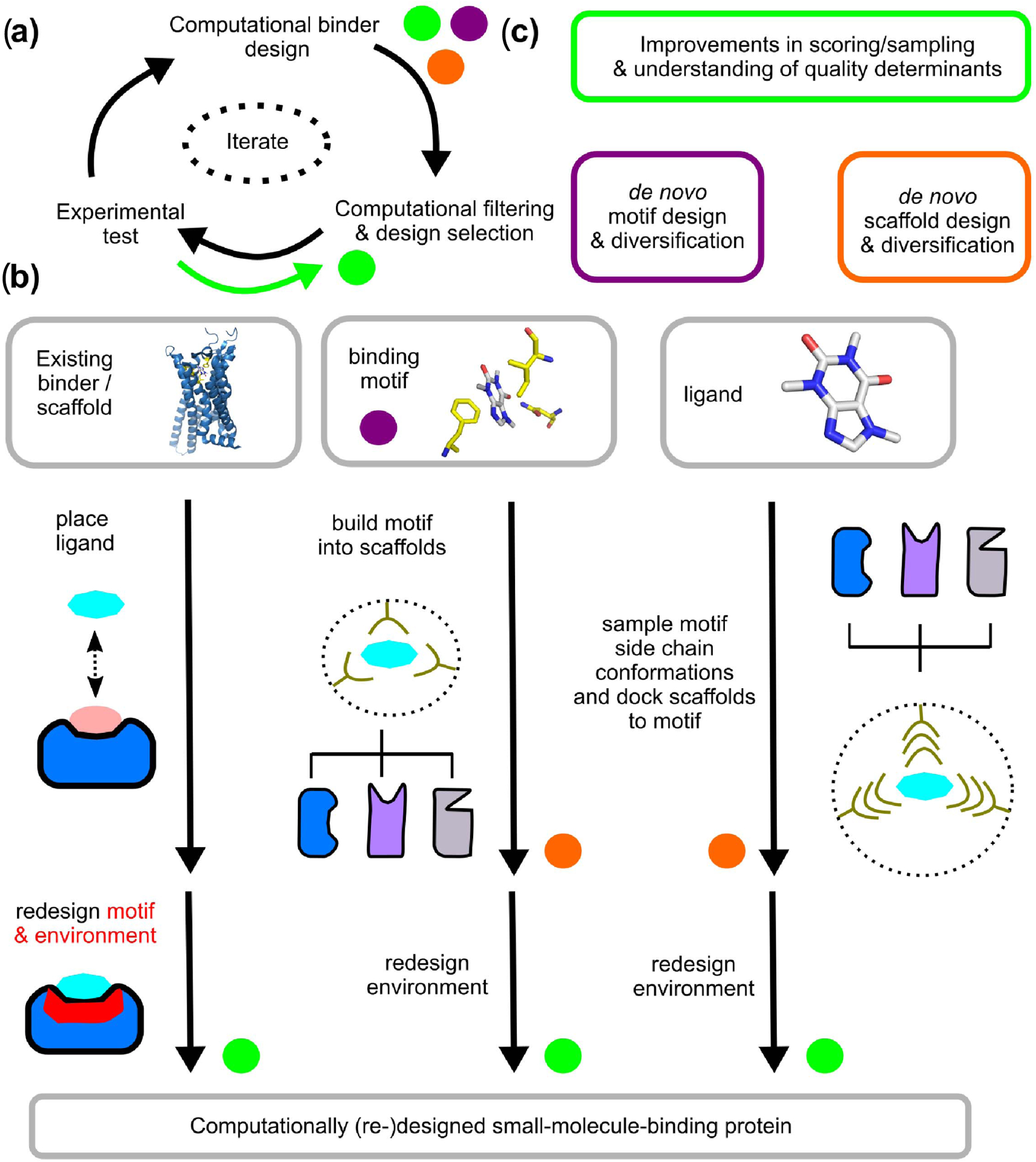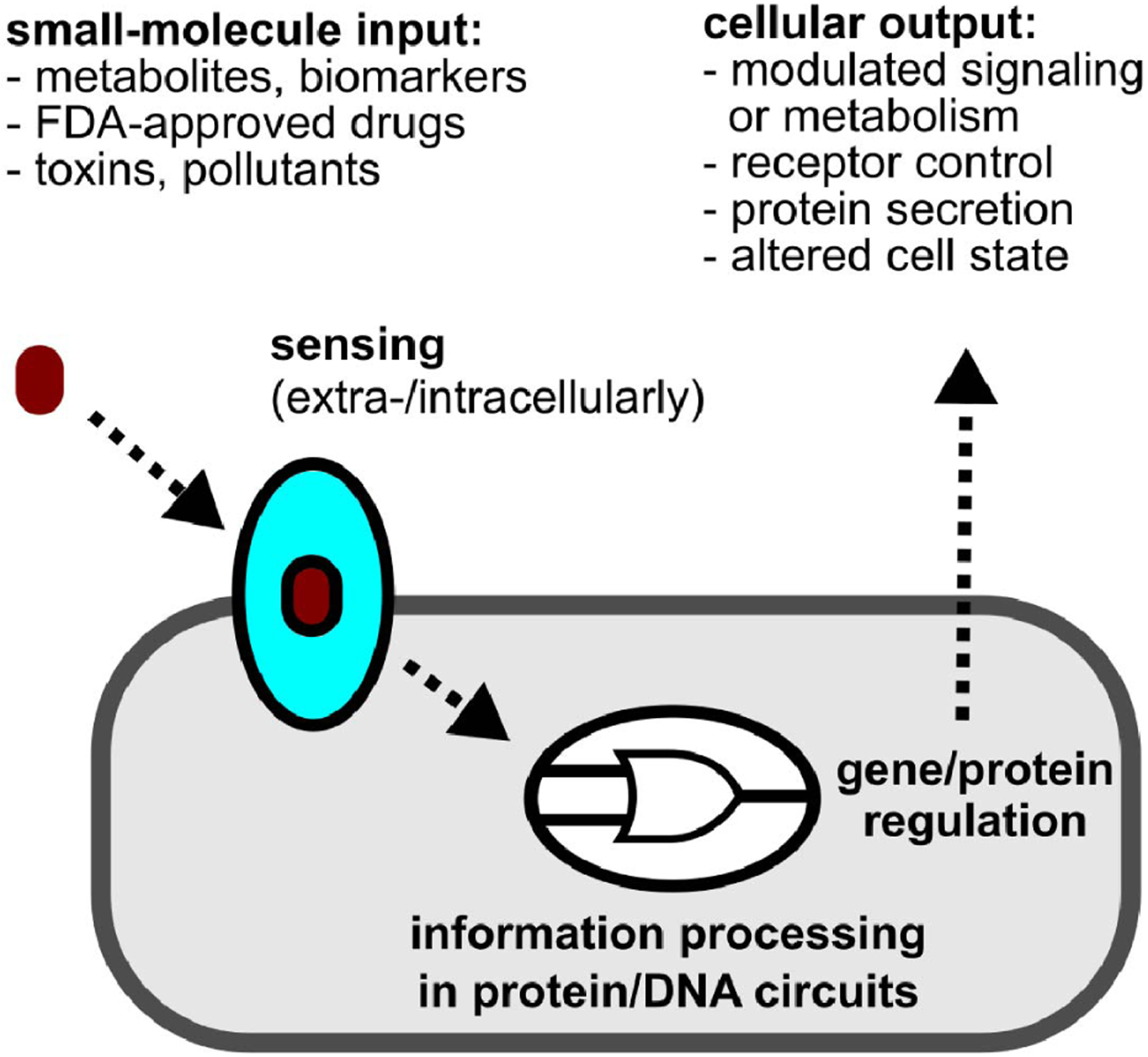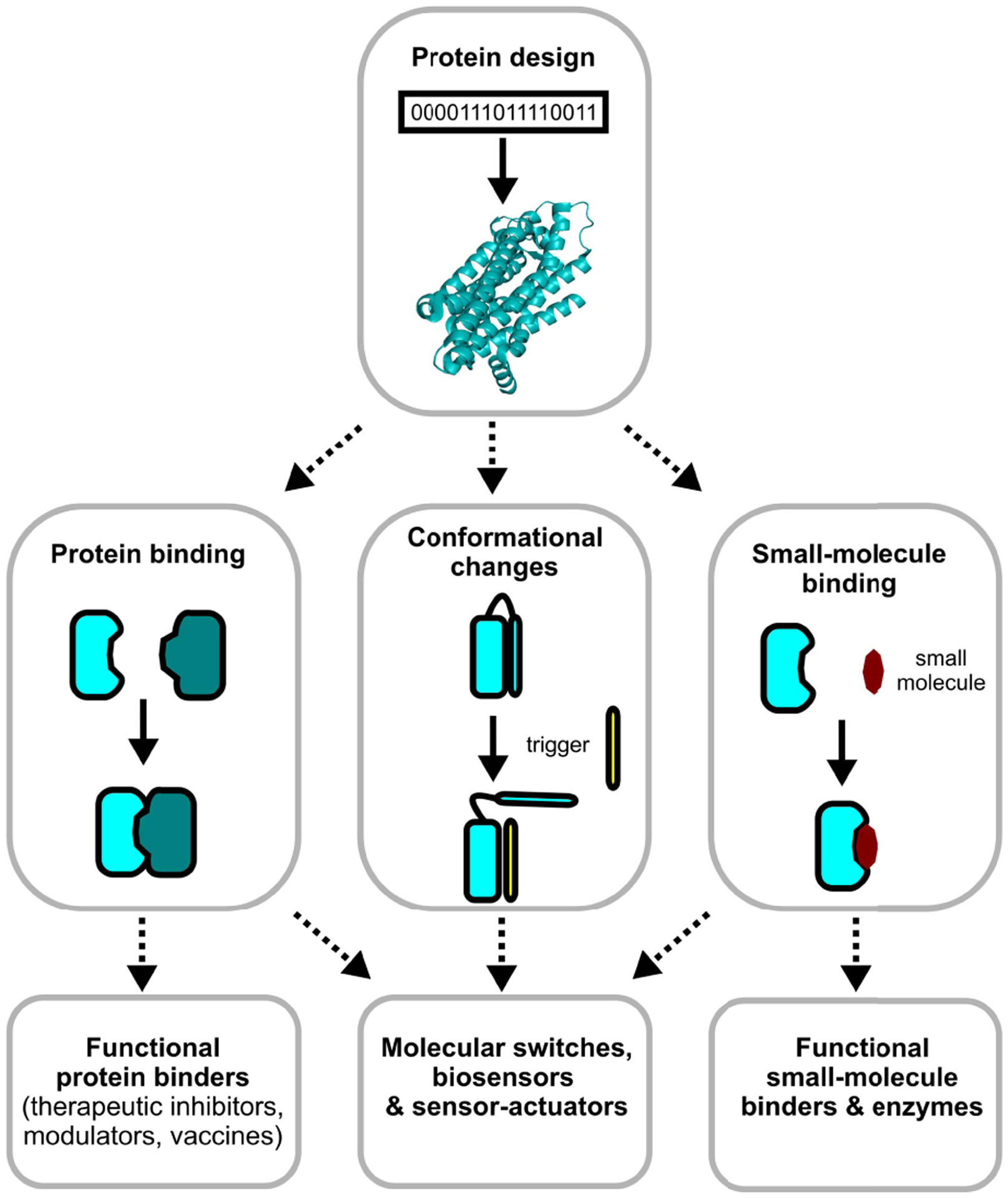合成生物学中基于蛋白质的小分子控制电路的计算设计进展
IF 23.2
1区 计算机科学
Q1 ENGINEERING, ELECTRICAL & ELECTRONIC
引用次数: 3
摘要
合成生物学从工程的角度研究生命系统,并承诺为医疗保健和可持续性方面的全球挑战提供解决方案。一个关键的组成部分是设计具有可编程输入输出行为的生物分子电路。这种电路通常依赖于识别分子输入的传感器模块,该模块通过蛋白质水平电路或调节靶基因的表达耦合到功能输出。虽然通过交换目标基因可以相对容易地定制基因表达输出,但感知新的输入是一个主要限制。自然界中发现的传感器种类有限,而且在将它们与工程电路连接时往往存在困难。计算蛋白质设计可能是解决这些挑战的关键技术,因为它允许设计模块化和可调谐的传感器,这些传感器可以根据电路的应用进行定制。在这篇文章中,我们回顾了最近为小分子输入设计基于蛋白质的传感器的计算方法,特别关注那些基于广泛使用的罗塞塔软件套件的方法。此外,我们还回顾了用于将配体输入与功能输出耦合的机制。基于最近的文献,我们展示了蛋白质设计和合成生物学的结合如何使新的传感器能够用于从生物医学到代谢工程的各种应用。最后,我们展望了蛋白质设计和细胞电路设计领域的前沿策略如何能够实现下一代感觉反应网络,这些网络可能越来越多地由从头组件组装而成,以显示多样化和可工程化的输入输出行为。本文章由计算机程序翻译,如有差异,请以英文原文为准。



Advances in the Computational Design of Small-Molecule-Controlled Protein-Based Circuits for Synthetic Biology
Synthetic biology approaches living systems with an engineering perspective and promises to deliver solutions to global challenges in healthcare and sustainability. A critical component is the design of biomolecular circuits with programmable input–output behaviors. Such circuits typically rely on a sensor module that recognizes molecular inputs, which is coupled to a functional output via protein-level circuits or regulating the expression of a target gene. While gene expression outputs can be customized relatively easily by exchanging the target genes, sensing new inputs is a major limitation. There is a limited repertoire of sensors found in nature, and there are often difficulties with interfacing them with engineered circuits. Computational protein design could be a key enabling technology to address these challenges, as it allows for the engineering of modular and tunable sensors that can be tailored to the circuit’s application. In this article, we review recent computational approaches to design protein-based sensors for small-molecule inputs with particular focus on those based on the widely used Rosetta software suite. Furthermore, we review mechanisms that have been harnessed to couple ligand inputs to functional outputs. Based on recent literature, we illustrate how the combination of protein design and synthetic biology enables new sensors for diverse applications ranging from biomedicine to metabolic engineering. We conclude with a perspective on how strategies to address frontiers in protein design and cellular circuit design may enable the next generation of sense-response networks, which may increasingly be assembled from
de novo
components to display diverse and engineerable input-output behaviors.
求助全文
通过发布文献求助,成功后即可免费获取论文全文。
去求助
来源期刊

Proceedings of the IEEE
工程技术-工程:电子与电气
CiteScore
46.40
自引率
1.00%
发文量
160
审稿时长
3-8 weeks
期刊介绍:
Proceedings of the IEEE is the leading journal to provide in-depth review, survey, and tutorial coverage of the technical developments in electronics, electrical and computer engineering, and computer science. Consistently ranked as one of the top journals by Impact Factor, Article Influence Score and more, the journal serves as a trusted resource for engineers around the world.
 求助内容:
求助内容: 应助结果提醒方式:
应助结果提醒方式:


